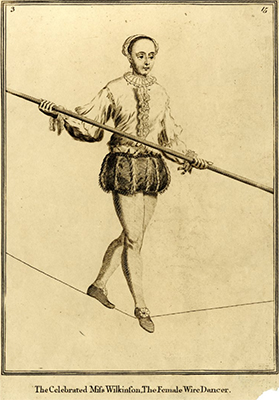
| The Roots of the Circus |
|||||||||||||||
Stone age |
Some scientists believe juggling goes back this far.
|
||||||||||||||
|
|
|||||||||||||||
Roots of circus in Europe |
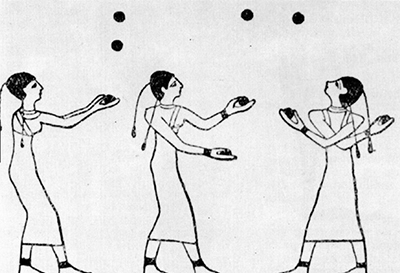 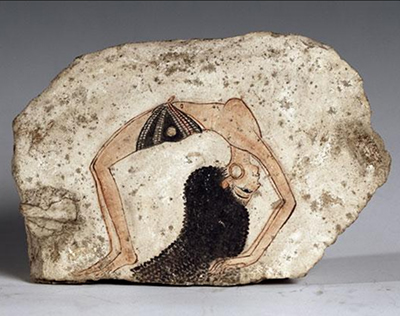 There were acrobats and jugglers in Egypt. There were acrobats and jugglers in Egypt.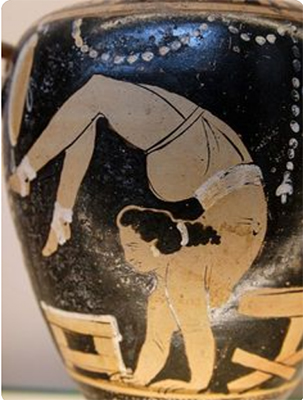 They spread to Greece. Greeks added stilt walking performers and clowns with a red nose, drunken behavior, and a giant phallus. They spread to Greece. Greeks added stilt walking performers and clowns with a red nose, drunken behavior, and a giant phallus.
|
||||||||||||||
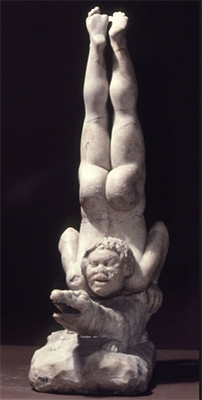
Greek acrobats and clowns spread to Rome. The Romans added ropewalkers, and itinerate troupes spread throughout Europe. |
|||||||||||||||
India |
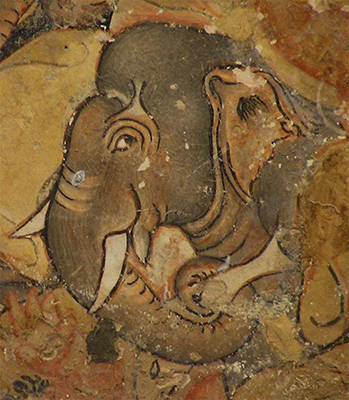 Elephants were an integral part of life in the Indus Valley. Elephants were an integral part of life in the Indus Valley. Mahouts trained them for labor, war, and temple life. |
||||||||||||||
|
Turin |
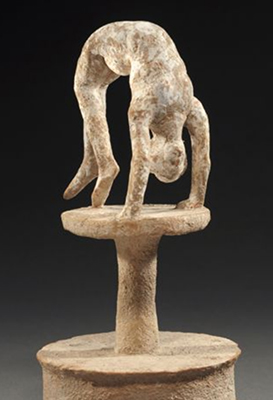 Dancing acrobat girls were sculpted. Dancing acrobat girls were sculpted. |
||||||||||||||
Mexico and Japan |
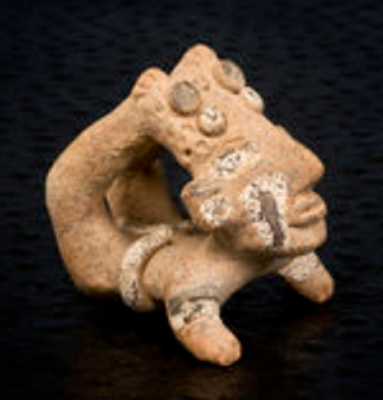 Ceramics portrayed acrobats. Ceramics portrayed acrobats. |
||||||||||||||
Asia |
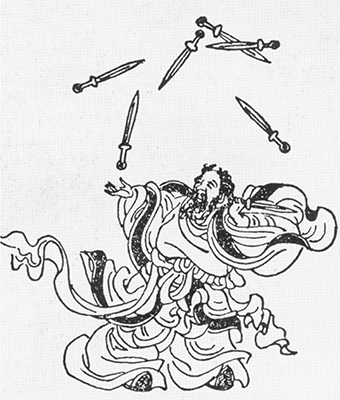 In China's Han Dynasty (206 BC to 220 AD) there were acrobats, jugglers, and magicians in harvest celebrations, representing the human capacity to survive. In China's Han Dynasty (206 BC to 220 AD) there were acrobats, jugglers, and magicians in harvest celebrations, representing the human capacity to survive.
|
||||||||||||||
First century AD |
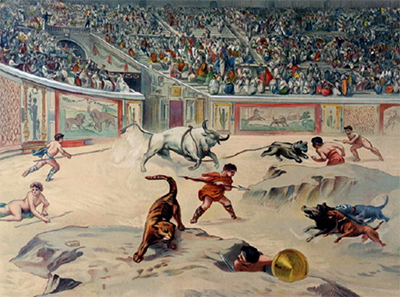 Wild animals were killed in the Roman Coliseum as entertainment: the ultimate animal abuse. Europe continued animal fights as entertainment until performing animals in circuses replaced them. Wild animals were killed in the Roman Coliseum as entertainment: the ultimate animal abuse. Europe continued animal fights as entertainment until performing animals in circuses replaced them.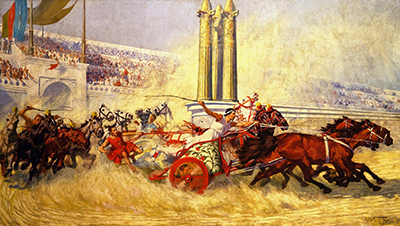 There were chariot races around a ring called a hippodrome, but these weren't really circuses. There were chariot races around a ring called a hippodrome, but these weren't really circuses. |
||||||||||||||
Middle Ages |
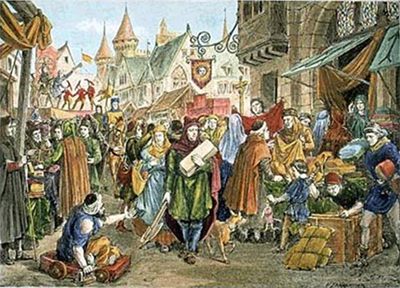 Acrobats, ropedancers, jugglers, and magicians performed in giant fairs in Europe and Asia. Merchants welcomed them as they drew crowds. The fairs were international marketplaces, so the troupes became intercultural. In 1102 "Freaks of Nature" were shown in St. Bartholomew's Fair, London. Itinerant troupes walked on hot coals and drank boiling oil. Acrobats, ropedancers, jugglers, and magicians performed in giant fairs in Europe and Asia. Merchants welcomed them as they drew crowds. The fairs were international marketplaces, so the troupes became intercultural. In 1102 "Freaks of Nature" were shown in St. Bartholomew's Fair, London. Itinerant troupes walked on hot coals and drank boiling oil.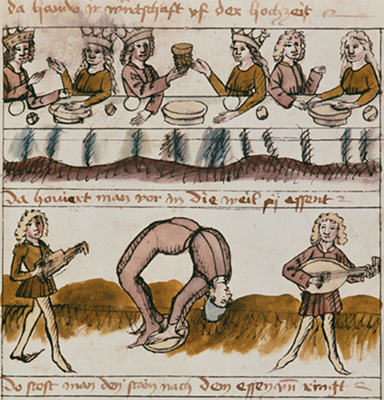 However, these circus precursors gradually faded out. They were even illegal in Scandinavia. In the fifth century rope dancing was illegal in France. However, these circus precursors gradually faded out. They were even illegal in Scandinavia. In the fifth century rope dancing was illegal in France. |
||||||||||||||
Renaissance |
Courts throughout Europe had troupes of acrobats, generally Italian. (The Italians still have dynasty families of acrobats that go back many generations.) 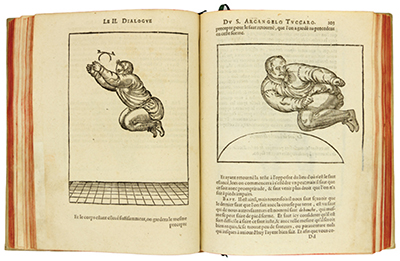 The first treatise on acrobatics, by Arcangelo Tuccaro, was published in 1599. The first treatise on acrobatics, by Arcangelo Tuccaro, was published in 1599.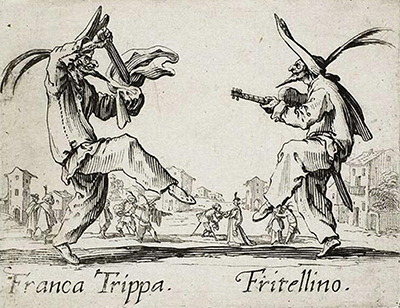 Commedia dell'arte, clown-like theater, began in Italy. Harlequin and Columbine amused audiences in Paris, Madrid, and London. Commedia dell'arte, clown-like theater, began in Italy. Harlequin and Columbine amused audiences in Paris, Madrid, and London.
|
||||||||||||||
The first known use of "freak" as a label came in 1563. An archaic definition of the word freak is: whim, sudden arbitrary change of mind, "as the freak takes you." So a freak of nature is nature trying something new just on a whim. "The Famous Dutch Woman" engraving by Marcellus Laroon, c. 1688, showed a slack ropedancer doing a trick that distorted the shape of the rope into a trapezoid-like shape (hence "trapeze"). (This is a similar engraving by Laroon. I can't find the one described.) |
|||||||||||||||
Want to know more about an image? Instructions for looking up images on Google. |
|||||||||||||||
|
|||||||||||||||
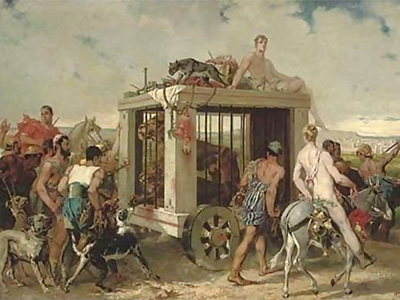 Priests of Cybele used trained lions and leopards, jugglers, and magicians to spread the cult of Dionysus, the god of fertility. Dionysus evolved into Bacchus and Sarapis, the Greco-Roman god of the underworld. Friction developed between advocates of entertainment and those who saw the displays as religious.
Priests of Cybele used trained lions and leopards, jugglers, and magicians to spread the cult of Dionysus, the god of fertility. Dionysus evolved into Bacchus and Sarapis, the Greco-Roman god of the underworld. Friction developed between advocates of entertainment and those who saw the displays as religious.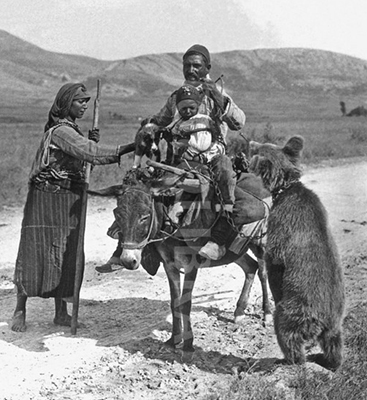 Bears performed for centuries, mimicking human behavior.
Bears performed for centuries, mimicking human behavior.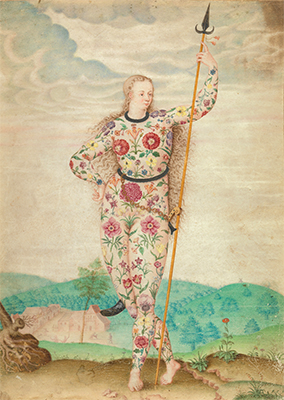 "A Young Daughter of the Picts," c. 1585, showed a lady covered with flowers, although they were probably not tattoos. The painting is attributed to Jacques Le Moyne de Morgues.
"A Young Daughter of the Picts," c. 1585, showed a lady covered with flowers, although they were probably not tattoos. The painting is attributed to Jacques Le Moyne de Morgues. 